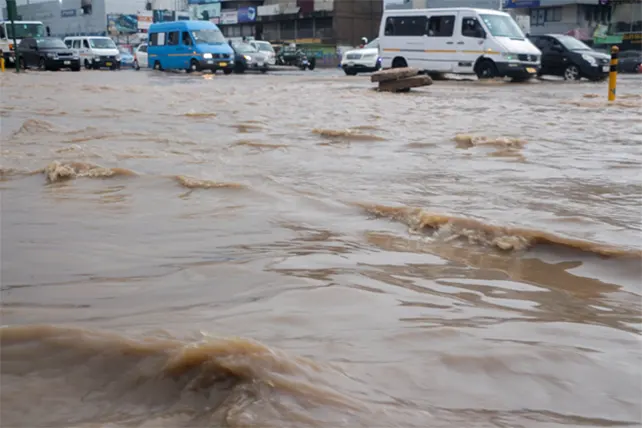The Adentan Municipal Assembly has confirmed that three individuals lost their lives due to severe flooding triggered by heavy rainfall across parts of Accra on Sunday, May 18.
Municipal Chief Executive (MCE), Ella Esiman Nongo, reported the fatalities occurred in various communities, including Lakeside, Nanakrom, and New Legon.
In a statement to Accra-based Citi FM, Madam Nongo revealed that two victims were from Lakeside, including a four-year-old girl from Nanakrom, and a gentleman from New Legon.
The torrential downpour, which lasted nearly three hours and began around 3:00 p.m., submerged major roads and isolated several neighbourhoods. Areas such as Weija, Kaneshie, Adabraka, Adenta-Dodowa, and Tema also experienced significant flooding, as key stormwater channels, including the Odaw drain, overflowed.
Emergency teams successfully rescued most stranded residents in the Ashiyie area; however, Madam Nongo cautioned that many low-lying communities remain at high risk due to inadequate drainage systems and unchecked development.
“Because people are building on waterways, there is no exit route for the water when it rains. That’s one of the main challenges we’re facing,” she explained. She emphasised the need for stricter enforcement of building regulations and immediate structural interventions to mitigate the chronic flooding issues plaguing Accra, particularly in vulnerable areas like Adentan.
“If we don’t tackle indiscipline in our building practices and enforce the rules, these tragedies will keep recurring,” she warned.
Residents of Lakeside have expressed frustration over the flooding, attributing the problem to the engineers responsible for constructing the East Legon Hills road. Local business owner, Prince Ansah, criticised the contractors for diverting drainage systems to a single outlet, exacerbating the flooding situation.
“To the best of my knowledge, I believe the problem lies with the contractor who worked on the road. In Ghana, whenever it rains, the situation becomes very bad, and here, we suffer a lot,” Mr. Ansah stated.
He called for better construction practices and deeper drainage systems to prevent blockages caused by debris.
He also noted that the drainage construction was left incomplete, contributing to the flooding crisis. “The gutter was built only up to a certain point where it should have been extended but was abandoned halfway. The volume of water flowing in this direction is heavy, and because the drainage was left incomplete, the water gets blocked and flows back, leading to flooding,” he added.
